A machine stitched panel was inspired by some art work created spontaneously with ink and acrylic paint. The work is flat, unusual for me as I normally like to raise the surface in some way.


Aylesbury Outer Ring: our artistic Response an exhibition showing at Queens Park Arts Center, Aylesbury
Private view: Thursday 21st March 2024 19.00 – 21.00hrs
Please let Janet or Liz know directly if you are able to join them.
MEET THE ARTISTS: Wednesday 27th March and Wednesday 24th April 11.00 – 15.00 hrs
Janet and Liz invite you to share the unexpected joy of their incidental ‘art walk’ beginning, six years ago, through to the creation of related stitched textiles and beyond to setting up this exhibition. Come and view the diverse perspectives in their photo books and workbooks, and wathch them practise their craft.
JANET EDMONDS WORKSHOP: 15TH APRIL 10.OO – 16.00HRS
ROUTES AND ROOTS: STITCHING ROUND AND ROUND
Janet has observed circles in many different contexts whilst walking the Outer Aylesbury Ring, from marks on the ground and in the trees, encircling footpaths, cyclical variations in the weather, the sound of country church bells rung in rounds and the memory of the continuum of generation that have come and gone across history.
These elements will be the inspiration for exploring surface through stitching, with techniques including couching, whipping, knotting and weaving.
LIZ HOLLIDAY TALK: Saturday 20th April 11.00 – 11.30hrs
Routes and Roots: Human footprints revealed in stitched maps
Liz has a lifelong love of maps. She uses both Ordnance Survey Explorer and Geological Survey sources to fire her understanding of the landscape she walks. Her exhibition maps detail all thirty parishes on the Outer Aylesbury Ring, together with evidence of man’s imprint over many centuries, from lost villages and castles to tumuli and church towers. Liz is planning for the individual maps in her installation to be purchased by donation, as a community fund-raiser.
Janet Edmonds and Liz Holliday
Exhibition Friday 22nd – Saturday 30th March
Private View Thursday 21st March 2024 19.00 – 21.00 hrs
Meet the artist days: Wednesday 27th March and Wednesday 24th April 2024 – 11.00 – 15.00 hrs
Workshop Day: tutor Janet Edmonds, Monday 15th April 2024, 10.00 – 16.00 hrs
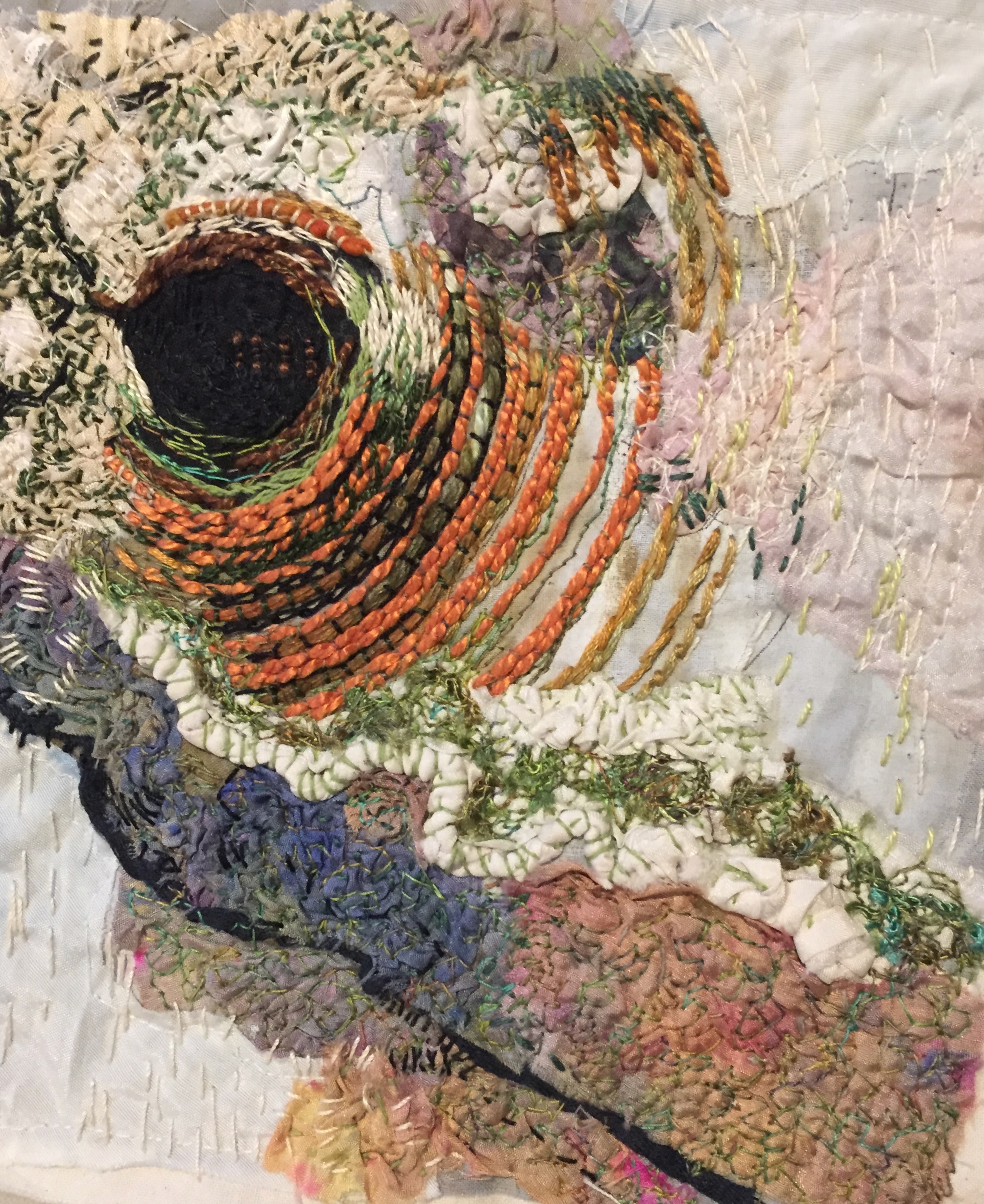

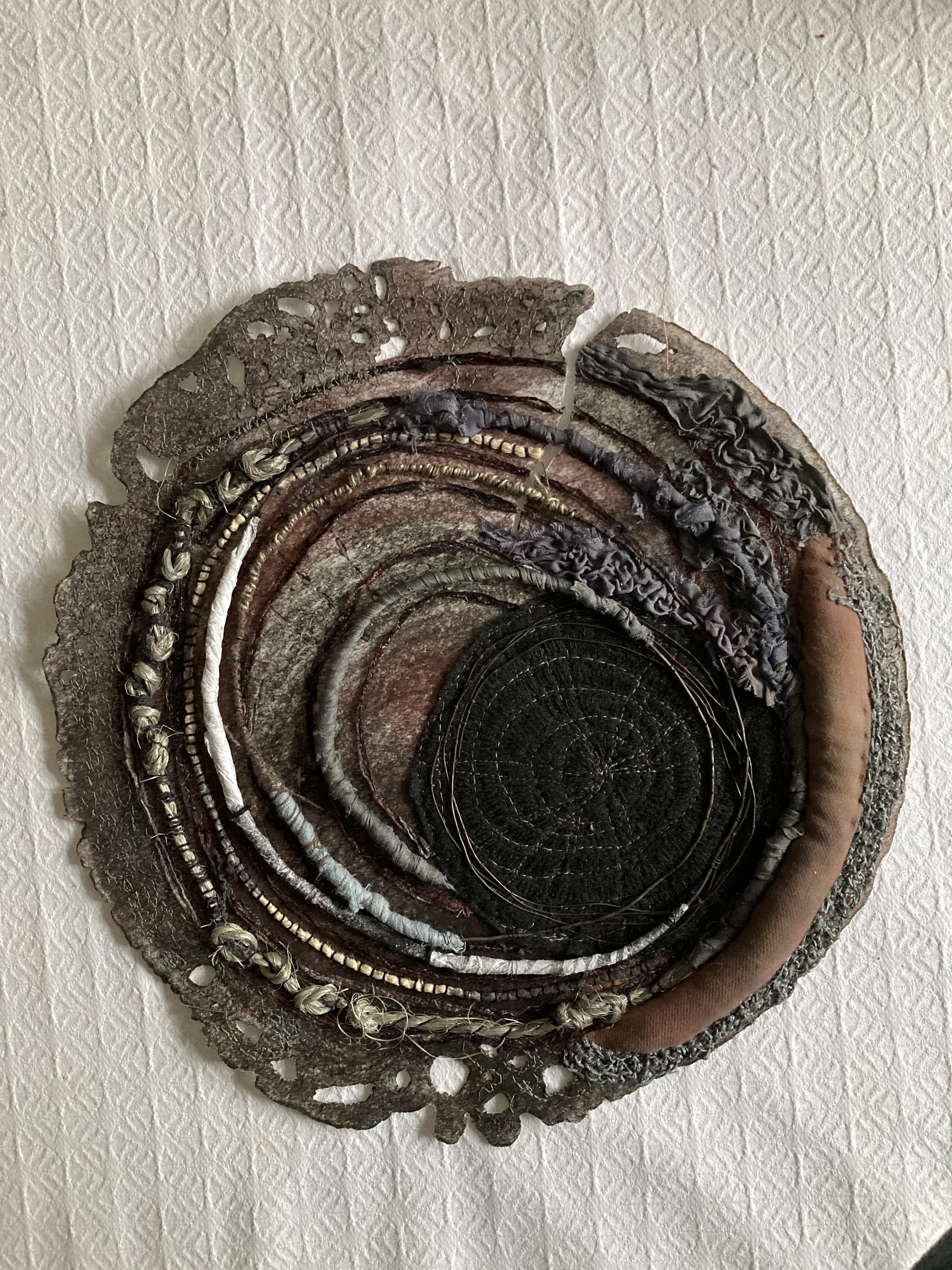
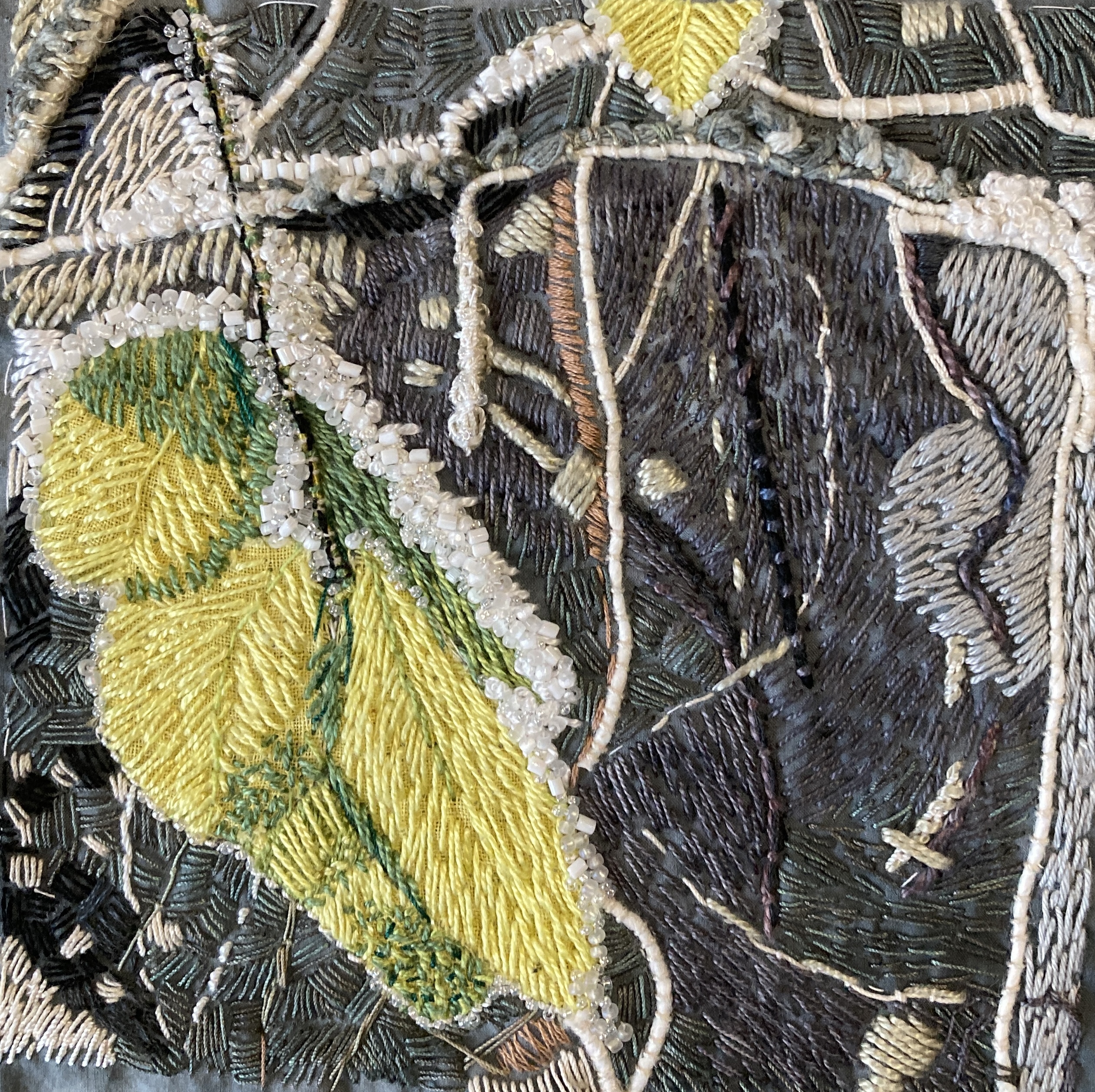
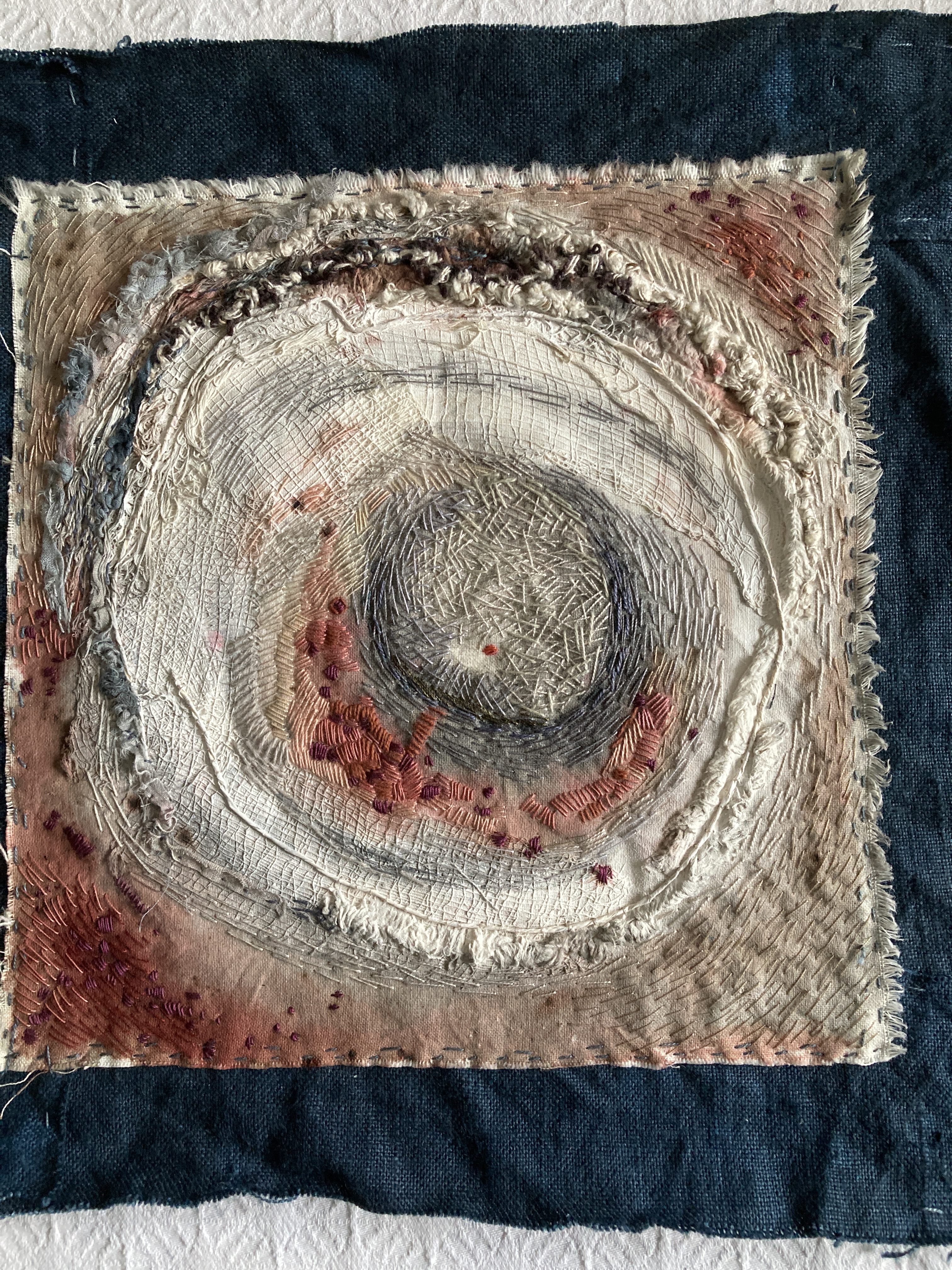
A machine stitched panel was inspired by some art work created spontaneously with ink and acrylic paint. The work is flat, unusual for me as I normally like to raise the surface in some way.
Aylesbury Outer Ring: our artistic Response an exhibition showing at Queens Park Arts Center, Aylesbury Private view: Thursday 21st March 2024 19.00 – 21.00hrs Please let Janet or Liz know directly if you are able to join them. MEET THE … Continue reading →
Janet Edmonds and Liz Holliday Exhibition Friday 22nd – Saturday 30th March Private View Thursday 21st March 2024 19.00 – 21.00 hrs Meet the artist days: Wednesday 27th March and Wednesday 24th April 2024 – 11.00 – 15.00 hrs Workshop … Continue reading →
I have an exhibition at Mams Gallery in Swindon starting on 16th November until 28th November I will be showing a mixture of textile work, some wall hung work and some 3D pieces Hiding Places

The making of an e-book
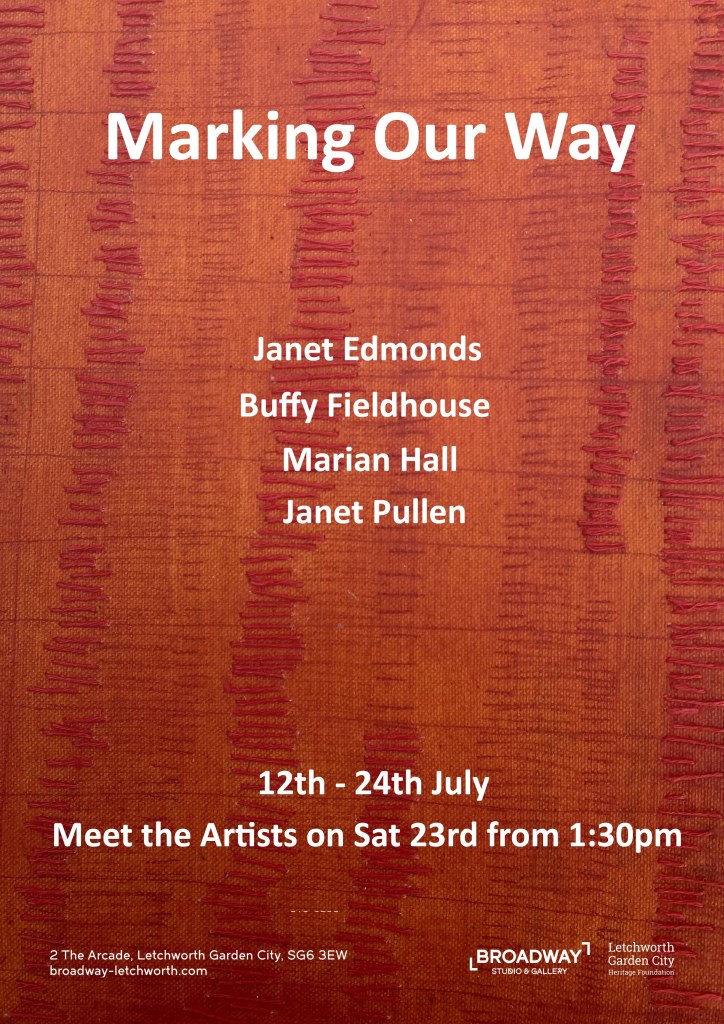
Inspired by creativity coach Rod Judkins, we each considered how we would design the cover of our fictional autobiography and the seeds of the project were sown. as the ideas for the book covers evolved, we started researching other artists who created overtly autographical work with which some personal connection was felt.
Spending more time at home presented an opportunity to take stock and throughtout this project we have reflected on the way we work, the work we made and the work we admire. Each has addressed the questions: Who am I? What do I do? What do I like? Why do I like them? How do I work?
Although we didn’t set out to write a book, we found the act of writing helped to clarify thoughts and to share them amongst ourselves.


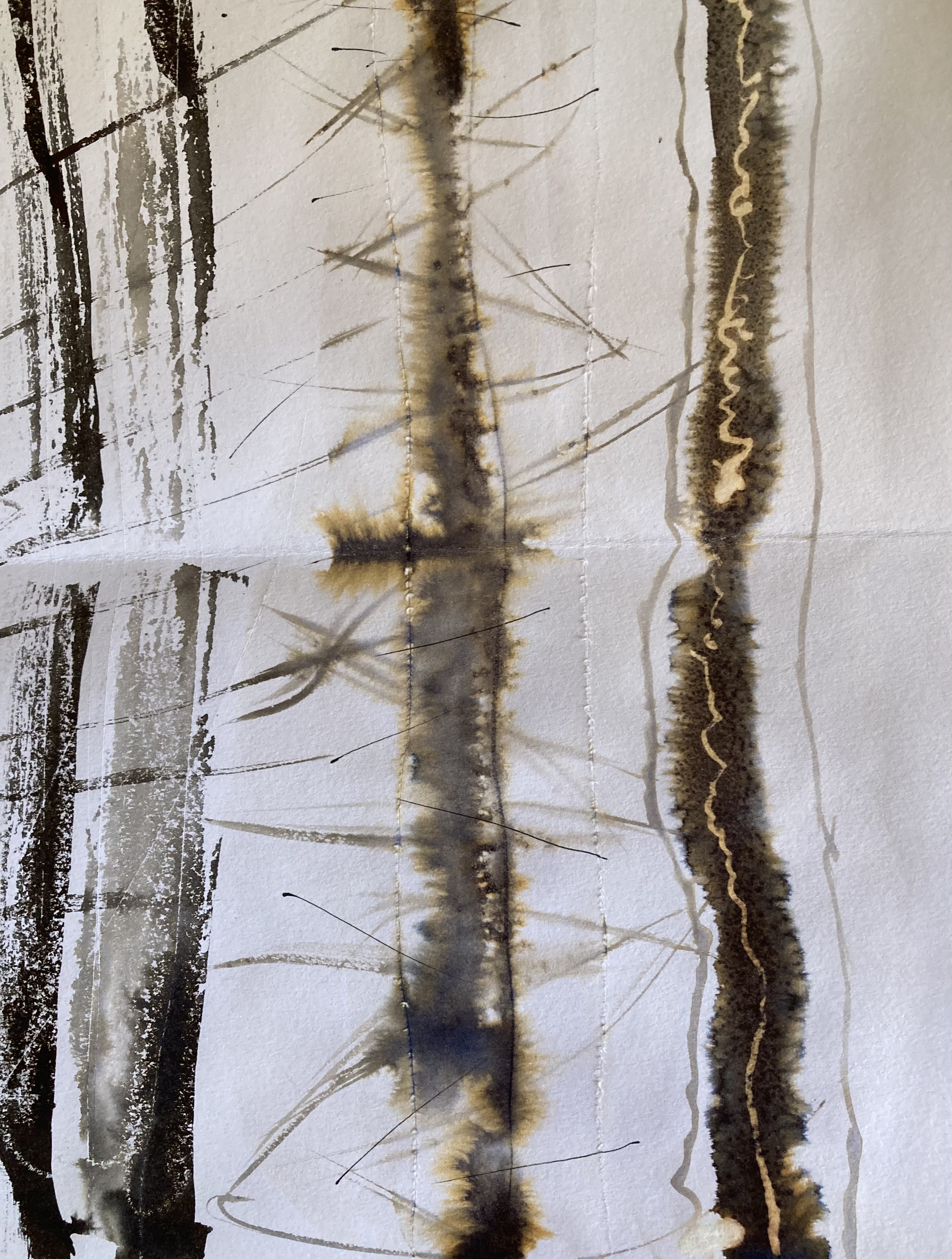
Line on paper with bleach
Missenden Abbey Summer School 15th/16th August
Book online at http://www.missendenschoolofcreativearts.co.uk
explore the expressive quality of LINE
The use of line in design plays an important part in giving rhythm, direction, shape and style to a composition. this course explores these aspects and will provide lots of ideas and inspiration to develop and build confidence to express your ideas into fabric and thread.
I have at last completed the two vessels started on a workshop taken at Hawkwood college near Stroud. The workshop was lead by Gisela Warburton, a very generous tutor. She showed how to make these vessels and how to really think carefully about how we could add or decorate using Line. We painted twigs from the surrounding woodland and also strips of fabric and studied the relationship between them when placed together on a plain white sheet of paper. We explored possibilities with placement, weaving them together and recorded the shadows created by light falling on and around the material.
It was a very thoughtful process, slow to come to judgement and selection, giving a meditative quality to the making. I have enjoyed making these and taking time to finish them. There is satisfaction in observing closely, mulling decisions over in the mind. Sometimes making is spontaneous and quick and other times it is good to slow down and contemplate options.
Scraped vessel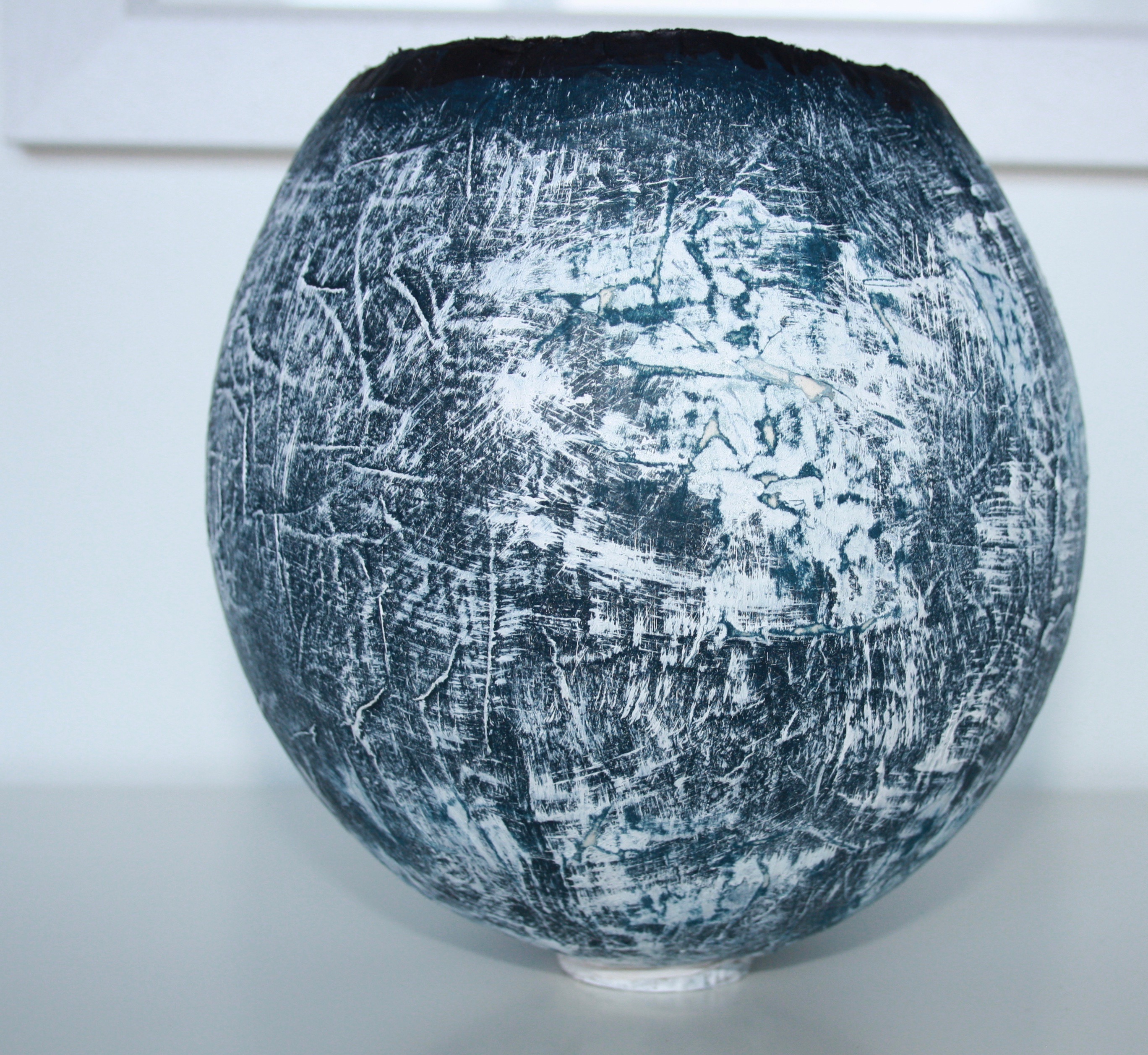 This vessel was painted black first then covered with white paint that was scraped back.
This vessel was painted black first then covered with white paint that was scraped back.
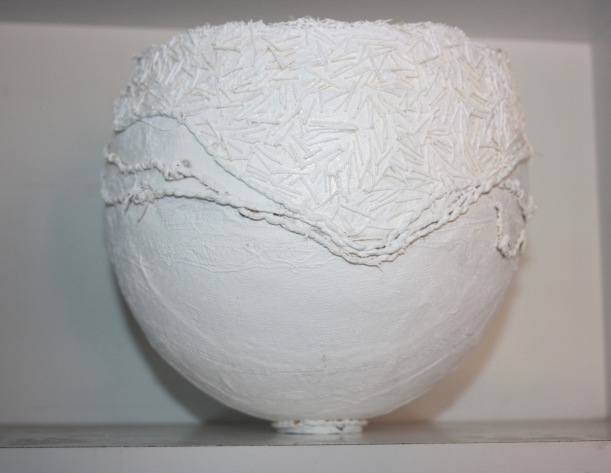
Here I have used just white paint to add a line or two and to fill the upper space with finely cut thread to create a texture that looks stitched.
The art of Embroidery
London 22 – 27th February 2022
Bankside Gallery, London SE1 9JH
I have a piece in this exhibition, do come and visit.
I will expand on the A1 painting I did yesterday. I used mainly black ink plus yellow and red. The red ink was a concentrated type and was very strong and not the colour I really wanted. I wet the paper in areas and and drew into the wet surface referencing the tree photos I had before me. The water spread the ink and gave me some nice mixes of colour. The concentrated red was much too strong so I drew over it with a brown Caron d’ache crayon to knock it back.
I used some of the papers I had painted to create a collage based on a tree photo and made a raised surface. It needs more work but I need time to consider what. I worked into a couple of the pieces I did yesterday.
There were a few visitors who showed interest in the work and it was good to consolidate my thinking as I had to explain my what I was doing.
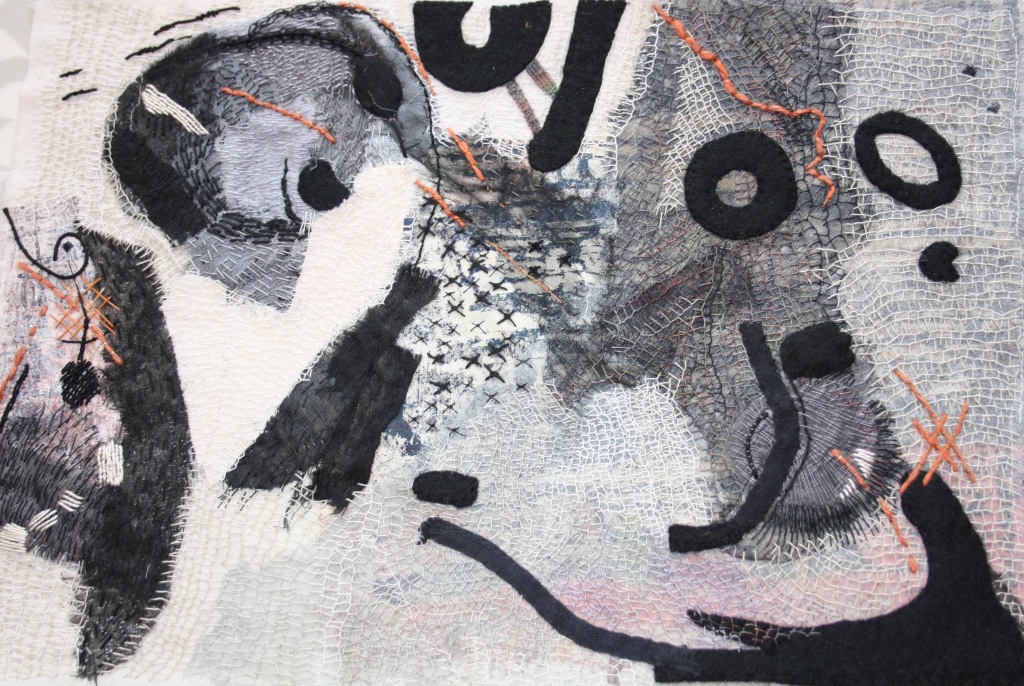
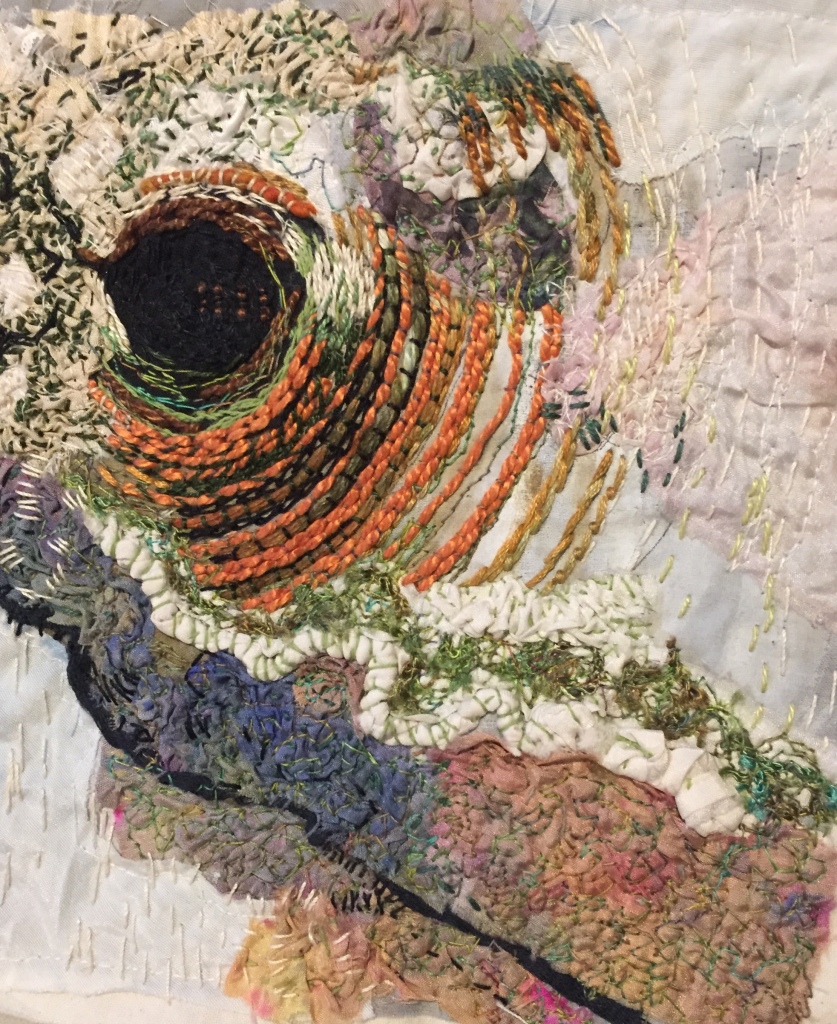
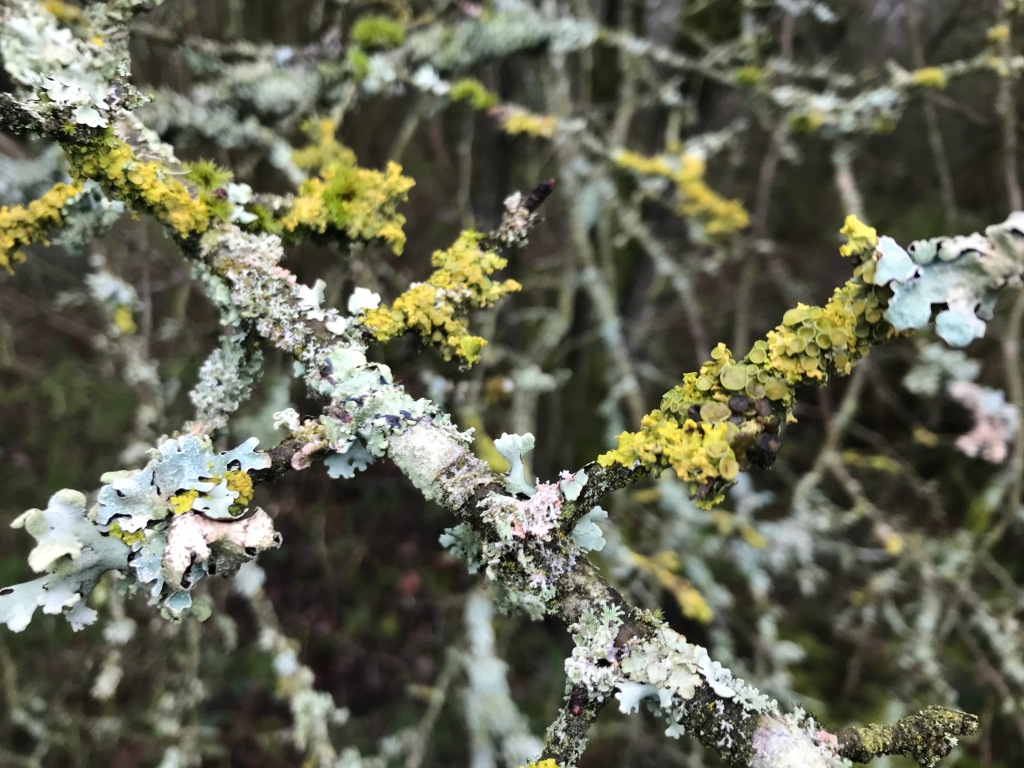
I will be in residence at Unit 1 Layby Farm, Old Risborough Road, Stoke Mandeville, HP22 5XJ from 11th – 23rd October.
I will be working to the theme of TREES and making work from the photographs that I took as I walked the Outer Aylesbury Ring. I am interested in the many details to be found within trees. I like to draw tree bark, lichen, scars and snags on the bark, decaying matter and anything that gives me texture and the patina of decay and ageing. Drawings in the first instance will be translated into stitching. I intend to work mainly by hand but depending on how the work develops, I may decide to add machine stitching.
The residency will end with a workshop 0n Saturday 23rd October that will explore close observation of the marks left by the passing of time, of growth and weathered details on the surfaces of trees. the act of looking, considering and recording the infinite variety of detail will result in intensely worked surfaces on paper and fabric.
Do come and visit.